When raising backyard chickens, one question dominates forums and social media groups: “What size coop do you need for backyard chickens?”. This comprehensive guide answers this question with expert advice backed by RSPCA guidelines and experienced chicken keepers across Australia. The answer of course depends largely on the breed of chickens and the number of chickens you’re wanting to keep in your backyard.
Table of Contents
ToggleKey Factors That Determine What Size Chicken Coop You Need For Backyard Chickens
The amount of space your chickens need depends on several factors, including:
Breed & Size
Different chicken breeds have different space requirements. Larger breeds like Australorps or Orpingtons naturally need more room than smaller bantam varieties. Standard-sized chickens are generally heavier and take up more physical space, while bantams can comfortably live in somewhat tighter quarters.
According to the RSPCA, the breed and size of your chickens should be a primary consideration when determining appropriate housing space, as larger birds require significantly more room to maintain good welfare.
Number of Chickens
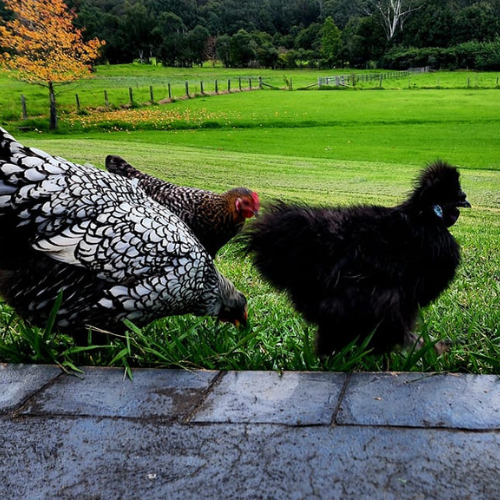
Your flock size is perhaps the most obvious factor affecting coop dimensions. More birds require more space—not just for physical comfort, but for maintaining healthy social dynamics. Overcrowding can lead to stress, pecking behavior, and increased disease risk.
The RSPCA emphasizes that appropriate stocking density is crucial for preventing behavioral problems in chickens, including feather pecking and aggression that can result from overcrowded conditions.
Climate & Weather Conditions
Australian summers can be particularly brutal on chickens. In hot climates, extra space allows for better air circulation and helps prevent heat stress. Conversely, in colder regions, chickens may huddle together for warmth, but still need adequate space to move around comfortably.
The RSPCA warns that heat stress is a significant welfare concern for chickens in Australia, making proper space and ventilation essential components of responsible chicken keeping.
Access to Free-Range Space
If your chickens have regular access to a garden or yard during daylight hours, you might be able to get away with a slightly smaller coop since they’ll primarily use it for roosting and laying. However, chickens confined to their coop and run full-time will need more space.
What Size Coop Do Backyard Chickens Need: Space Recommendations
To ensure your chickens remain comfortable and healthy, follow these research-backed space guidelines that answer the question: “What size coop do backyard chickens need?”
Inside the Coop (housing and run)
The gold standard is a minimum of 1 square metre per chicken for the sleeping, nesting and run area. This amount of space allows chickens to:
-
- Move freely without crowding
- Maintain proper body temperature
- Access food and water without competition
- Exhibit natural behaviors
The RSPCA recommends at least 0.37 square metres of floor space per bird for standard breeds in enclosed housing systems, with additional space strongly recommended for backyard settings.
For example, a flock of four chickens would need a coop with at least 4 square metres of overall floor space if not free ranging. If your birds will be confined more often due to weather or predator concerns, consider allowing even more space—up to 1.5 square metres per bird.
Chicken Tractors: Mobile Solutions
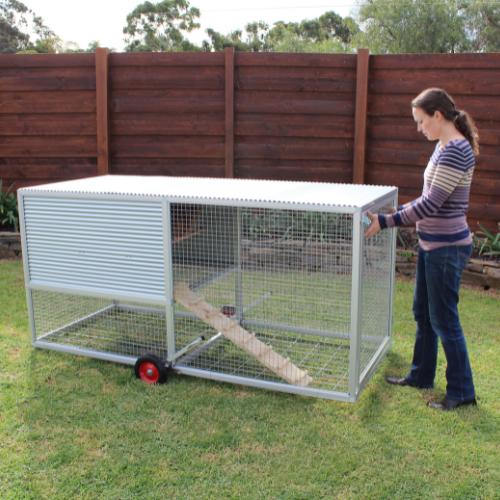
Chicken tractors offer an innovative alternative to traditional fixed coops, particularly for those with limited space or who want to utilize their chickens for garden management. These mobile coops combine housing and run space in one portable unit that can be moved regularly to provide fresh foraging ground.
When determining the best sized chicken tractor or mobile chicken coop, the same space principles apply with some modifications:
-
- Floor Space: Still aim for 0.5-1 square metre per bird within the enclosed shelter portion
- Run Section: A minimum of 1-1.5 square metres per bird in the attached run section
- Height: At least 80-90cm tall to allow chickens to stand naturally
- Width: Typically 1-1.5 metres to maintain portability while providing adequate space
The RSPCA notes that chicken tractors can be suitable housing if they’re moved frequently (ideally daily) to provide fresh ground and are sized appropriately for the number of birds. They caution against overcrowding, which is a common issue with imported chicken coops marketed for “up to 4 chickens” that often provide inadequate space, with photos deceiving the buyer to the actual size of the coop.
Outdoor Run (Enclosed Area)
The run is where your chickens will spend most of their waking hours if they don’t have free-range access. Research shows chickens should have 3 square metres per bird in their run space, if possible.
The RSPCA guidelines specify that each chicken should have access to at least one square metre of range area, with much more space recommended for optimal welfare outcomes.
This gives chickens room to:
-
- Exercise properly
- Dust bathe
- Forage naturally
- Establish social hierarchies without excessive conflict
Remember that these are minimum recommendations. More space is always better for chicken health and happiness.
Perching Space
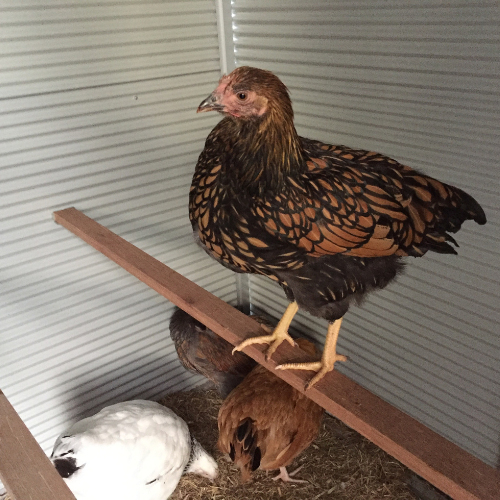
Chickens need adequate perching space for comfortable sleep. Plan for:
-
- 15cm of perch length per bird (minimum)
- Perches made from smooth square timber (42mm x 19mm or larger)
- Perches positioned at around 50cm off the ground
The RSPCA confirms that providing appropriate perching is essential for chicken welfare, specifying that perches should be at least 15cm per bird and positioned to allow chickens to perch naturally without crowding.
For heavier breeds, consider lower perches as they may struggle to reach high roosts and could injure themselves jumping down. Alternatively, a timber ladder to assist in getting to the higher perches would also be a suitable solution.
Make sure perches are positioned higher than laying boxes if possible, to discourage chickens from sleeping in their nests, which can lead to soiled eggs and nesting material. If the chickens do decide to nest in the laying boxes, close off the laying boxes for a short period of time in the early evenings to get the chickens in the habit of perching correctly. Once trained to perch on the perches at night, this should not be an ongoing problem.
Nesting Boxes
For egg production, your coop needs:
-
- 1 nesting box (laying box) per 3-4 hens
- Boxes located in quiet, darker areas of the coop
- Dimensions of approximately 30cm x 30cm
The RSPCA recommends at least one nesting box for every 5-7 hens, though many backyard chicken keepers find that a slightly more generous ratio of one box per 3-4 hens helps prevent competition and stress.
The chickens will decided on a favourite laying box and will often take it in turns depending on the hierarchy in the chicken coop. Having one nest per chicken is not necessary and will often be unused.
Important Chicken Coop Design Considerations
Beyond just size, several design factors significantly impact chicken comfort and safety:
Ventilation & Shade
The Australian heat can be deadly for chickens, making proper ventilation absolutely critical. Your coop should feature:
-
- Multiple ventilation openings
- Cross-ventilation options for summer months (weather shields that can be removed)
The RSPCA emphasizes that proper ventilation is crucial for chicken health, particularly in Australian conditions where heat stress is a major welfare concern. Their guidelines stress the importance of good airflow while protecting birds from drafts.
If you’ve ever lost chickens to heat stress during a particularly hot summer, you’ll understand the importance of good ventilation. Chickens unfortunately will decide to go and sit in the hottest back corner of a traditional chicken shed, so having a well designed coop without these hot spots, is very important.
Protection from Predators
Australia has no shortage of chicken predators—foxes, snakes, hawks, and even neighborhood dogs pose significant threats. Effective predator-proofing includes:
-
- Strong mesh (minimum 1.24mm thick wire recommended)
- Mesh floor under the entire coop or mesh extending at least 30cm underground around the perimeter of your coop
- Secure locks on all doors that curious animals can’t manipulate
- Covered runs to protect from aerial predators
The RSPCA identifies predator protection as a fundamental welfare requirement, noting that inadequate protection causes both acute suffering and chronic stress in chickens.
Weatherproofing
Your chicken coop must provide reliable shelter from all weather conditions:
-
- Suitable roofing to ensure proper water runoff
- Raised flooring in flood-prone areas
- Solid walls on sides facing prevailing winds
- Proper drainage around the coop and run
According to RSPCA guidelines, chickens must be provided with shelter that effectively protects them from rain, wind, and extreme temperatures—considerations that are particularly important in Australia’s diverse and sometimes harsh climate zones.
Legal & Council Regulations
Before building your chicken coop, check your local council regulations. Australian councils vary significantly in their requirements:
-
- Many limit flock size (often to 4-10 birds in urban areas)
- Some specify minimum distances from property boundaries
- Others have noise restrictions that could affect coop placement
- Building permits may be required for larger structures beyond 15m2
The RSPCA recommends familiarizing yourself with both council regulations and animal welfare codes of practice relevant to your state or territory to ensure your chicken-keeping practices are both legal and humane.
What Size Coop Do I Need For Backyard Chickens Based on Flock Size
Small Flocks (2-3 hens)
For a small flock, consider at least 60cm of perch space and at least one laying box. Royal Rooster’s Chicken Castle and Royal Run are two great choices for a mobile chicken coop solution for 2-3 chickens. If you’re after a fixed position coop, the Chicken Palace works well for a couple of hens:
-
- Chicken Castle – measures 1.8m x 0.9m with an additional upstairs space of 0.9m x 1m. This has 1.8m of perch space.
- Royal Run- measures 2.3m x 0.9m and also has 1.8m of perch space.
- Chicken Palace – measures 2.3m x 1.6m and has 3.2m of perch space.
Medium Flocks (4-6 hens)
For a medium-sized backyard flock you would need 2-3 nest boxes at least 120cm of perch space. Royal Rooster offers 4 chicken coops that can be moved around your backyard and suit 4-6 chickens: Chicken Castle Deluxe, Royal Run Deluxe, Chicken Roll or the Chicken Roll With Small Extension. If you’re after a fixed position coop, the Chicken Palace with Small Extension would be ideal.
-
- Chicken Castle Deluxe – measures 2.13m x 0.9m with an additional upstairs space of 0.9m x 1m. This has 1.8m of perch space.
- Royal Run Deluxe – measures 2.85m x 0.9m and also has 1.8m of perch space.
- Chicken Roll – measures 2.25m x 1.3m and has 2.6m of perch space
- Chicken Roll With Small Extension – measures 3.5m x 1.3m and has 2.6m of perch space
- Chicken Palace with Small Extension – measures 3.5m x 1.6m and has 3.2m of perch space.
Large Flocks (6-10 hens)
For larger flocks, which approach the maximum allowed in many urban areas, you’d want 3-4 nest boxes and multiple perches totally at least 180cm in length. There are two mobile coop options that work well for larger flocks: the two storey Chicken Castle Royale or the Chicken Roll with Large Extension. If you’re after a more substantial walk in style chicken house, the Chicken Palace with Medium Extension or Chicken Palace With Large Extension are popular choices.
-
- Chicken Castle Royale – measures 2.85m x 1.2m with an additional upstairs space of 1.2m x 1m. This has 2.4m of perch space.
- Chicken Roll With Large Extension – measures 4.7m x 1.3m and has 2.6m of perch space
- Chicken Palace With Medium Extension – measures 4.7m x 1.6m and has 3.2m of perch space.
- Chicken Palace With Large Extension – measures 5.9m x 1.6m and has 3.2m of perch space.
Signs Your Coop Is Too Small
It’s important to make sure you get a chicken coop large enough for your chickens otherwise issues can occur. Watch for these warning signs that your chickens need more space:
-
- Aggressive pecking or feather pulling
- Decreased egg production
- Chickens refusing to enter the coop at night
- Soiled feathers from overcrowded conditions
- Unpleasant ammonia smell from inadequate ventilation
The RSPCA identifies these behavioral and health indicators as potential signs of inadequate housing and recommends immediate action to improve conditions when such symptoms appear.
If your hens pecking are at each other more aggressively, it likely means they need more space. Expanding their run by just a few square metres can make a remarkable difference in their behaviour.
Future-Proofing Your Coop
Many chicken keepers find their flocks grow over time as they enjoy the hobby. Consider purchasing a coop larger than your immediate needs as it’s much more difficult to increase your coop size down the track. If you’re considering 2-3 chickens, buy large enough to increase to 4-6 chickens instead.
Seasonal Adjustments to Chicken Coop Size
Australian weather extremes may require seasonal modifications to your coop:
Summer Adaptations
-
- Additional shade over the run area
- Misters or shallow water containers for cooling
- Extra ventilation openings – remove the Weather Shields on your Royal Rooster to allow for maximum ventilation
The RSPCA strongly emphasizes the importance of managing heat stress in Australian conditions, recommending shade, ventilation, and access to cool water as essential welfare measures during hot weather.
Winter Adaptations
-
- Wind barriers on exposed sides – put your Weather Shields in place in the cooler months
- Additional bedding for insulation
- Reduced ventilation while still preventing condensation. If the coop is TOO closed up, condensation can form which can cause respiratory illnesses in chickens. They can withstand quite hot or cold conditions as long as the coop is well ventilated.
Conclusion
When determining the best size of chicken coop for backyard chickens, always prioritise generous space allowances over minimum requirements. Following the guidelines in this article will result in healthier birds and better egg production.
The RSPCA’s guidelines consistently emphasize that while minimum space requirements provide a baseline, more generous space allowances are strongly associated with improved welfare outcomes and healthier chickens. Free ranging your chickens if possible is recommended.
Remember that local conditions and specific breed characteristics may necessitate adjustments to these guidelines. When in doubt, err on the side of more space—your chickens will thank you with better health, behavior, and productivity.
Frequently Asked Questions
What size coop do backyard chickens need for winter?
Backyard chickens need the same minimum space requirements in winter—1 square metre per bird inside the coop—but benefit from additional protection from drafts. During cold weather, chickens often spend more time inside, making adequate space even more important to prevent stress and disease.
What size coop do backyard chickens need if they free-range daily?
Even with daily free-ranging, backyard chickens still need adequate coop space of at least 0.5-1 square metre per bird. The coop is used for roosting, laying, and shelter during bad weather, so it must provide enough room for all birds to move comfortably. Free-ranging may allow for a slightly smaller run area, but the interior coop size should never be compromised.
What size coop do backyard chickens need for different breeds?
Larger breeds such as Orpingtons, Australorps, and Rhode Island Reds need the full 1 square metre per bird recommendation. Bantam varieties can manage with approximately 0.7 square metres per bird. Dual-purpose breeds like Sussex and Wyandottes fall in between, requiring about 0.8-0.9 square metres each. Always check breed-specific requirements before finalizing your coop design.
What size coop do backyard chickens need in hot Australian summers?
During hot Australian summers, backyard chickens benefit from more spacious coops—aim for 1.2-1.5 square metres per bird. This extra space improves air circulation and reduces heat stress. Additional ventilation openings, positioned to create cross-breezes, are also essential for summer comfort.


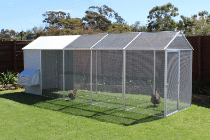
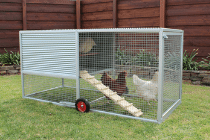
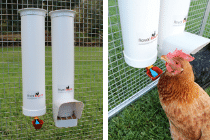
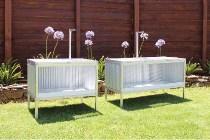
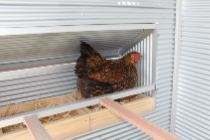
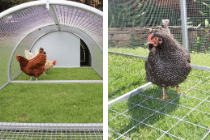
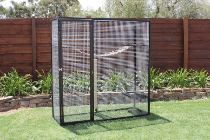
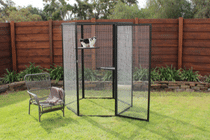
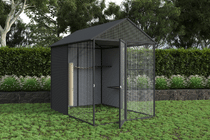
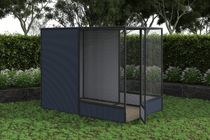
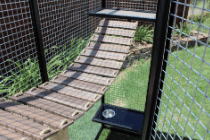
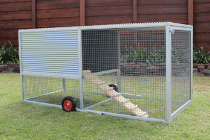
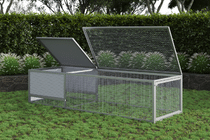
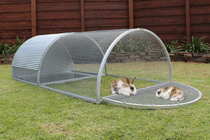
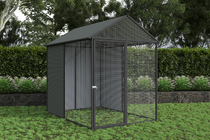
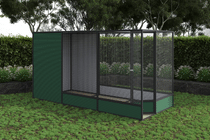
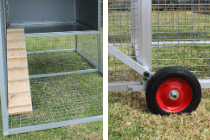
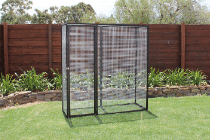
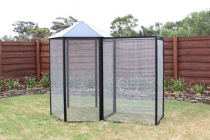
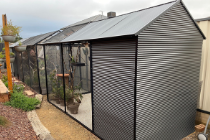
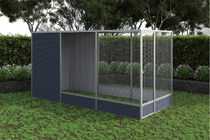
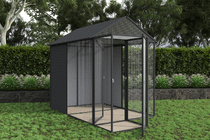
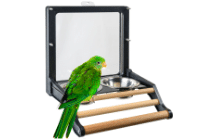
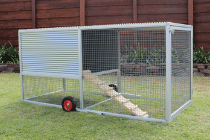
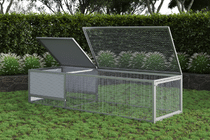
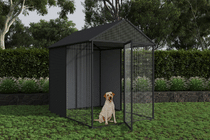
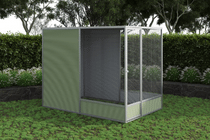
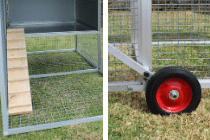

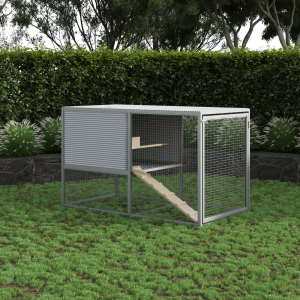
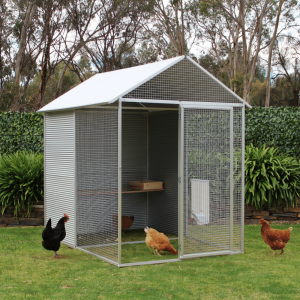
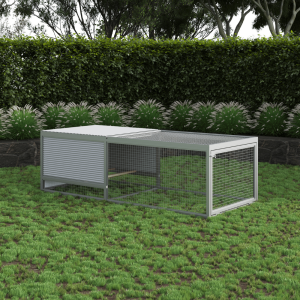
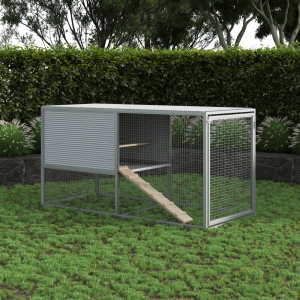
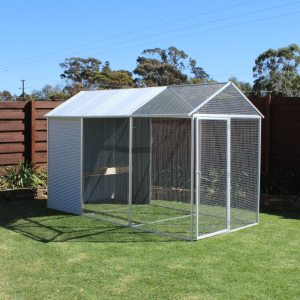
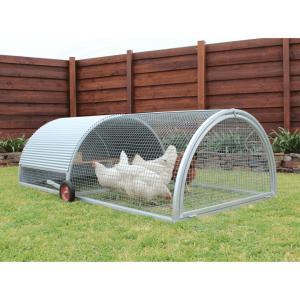
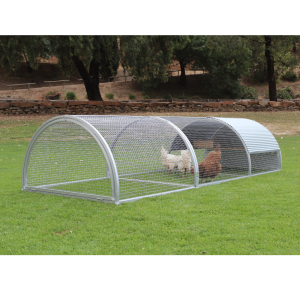
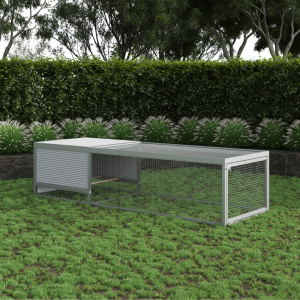
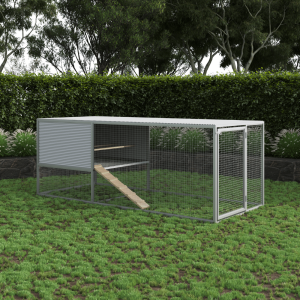
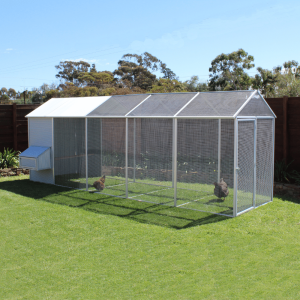



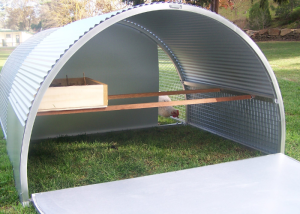
Add comment